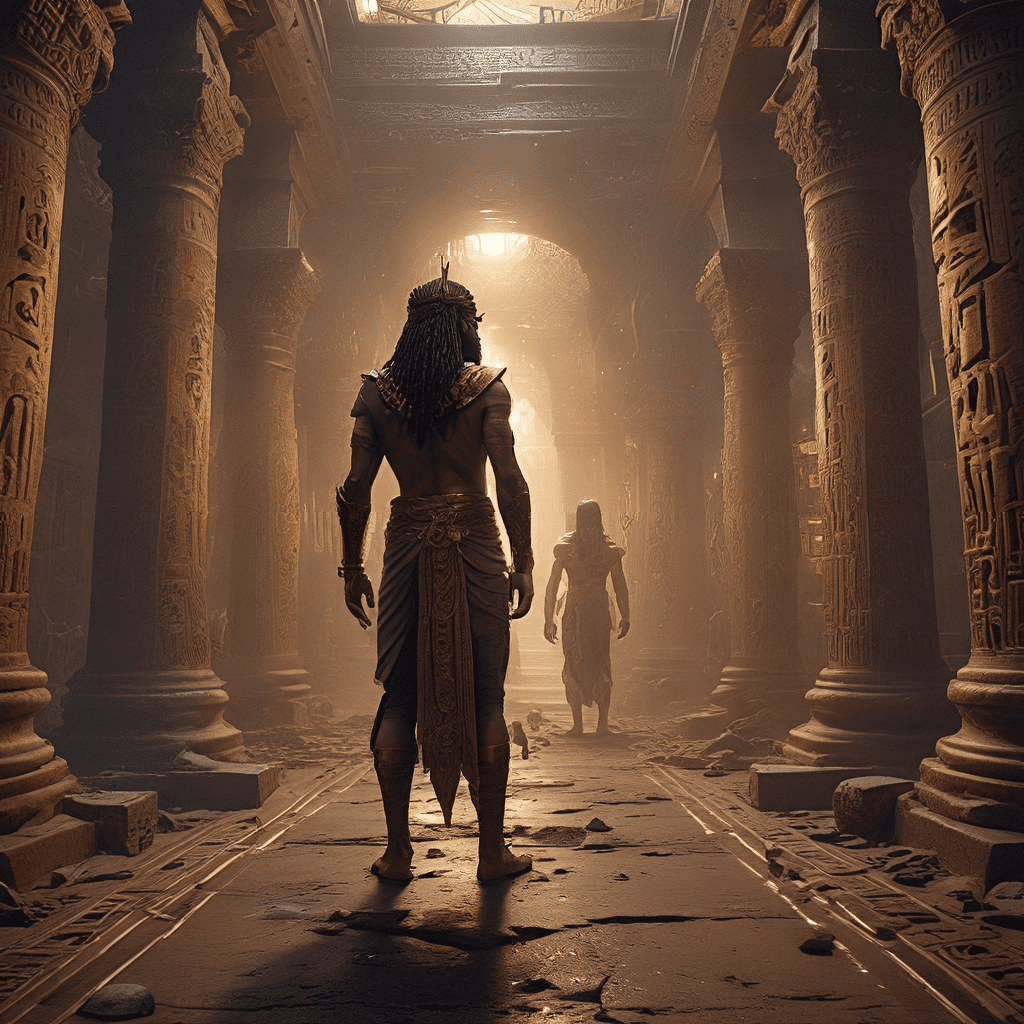The Abyss of Souls: Exploring the Depths of the Egyptian Underworld
1. Introduction: A Journey into the Afterlife
Imagine a world beyond the reach of the sun, a place where the living cannot venture. This is the Egyptian Underworld, a realm steeped in mystery and wonder, where the souls of the deceased embark on a perilous journey after death. For ancient Egyptians, death wasn’t an end but a transition, a passage to the afterlife, a place where they hoped to find eternal peace and happiness. This article delves into the depths of the Egyptian Underworld, exploring its complex mythology, rituals, and beliefs.
2. The Realm of the Dead: A World of Mystery and Wonder
The Egyptian Underworld, known as ‘Duat,’ was a vast and intricate realm, depicted as a labyrinthine network of tunnels, chambers, and rivers. It was a place of both beauty and terror, filled with mythical creatures, gods, and challenges that awaited the souls of the deceased. The Egyptians imagined the Duat as a subterranean world, shrouded in darkness, ruled by the god Osiris, the lord of the dead. The realm was filled with symbolic elements, reflecting the cyclical nature of life, death, and rebirth, a key aspect of Egyptian belief.
3. The Path of the Deceased: Navigating the Underworld
Upon death, the soul embarked on a treacherous journey through the Duat, guided by the jackal-headed god Anubis. The journey began with the mummification process, believed to preserve the body for the afterlife. The deceased then faced the perils of the Underworld, traversing dark tunnels, crossing treacherous rivers, and confronting mythical creatures like the serpent Apep, who sought to devour the sun god Ra. Each obstacle tested the soul’s strength and fidelity to the divine.
4. The Halls of Judgment: Facing the Scales of Ma’at
A crucial moment in the journey was the Weighing of the Heart ceremony. Here, the deceased stood before Osiris, god of the Underworld, and Thoth, the god of wisdom and knowledge. Their heart was weighed against the feather of Ma’at, the goddess of truth, justice, and cosmic order. If the heart was lighter than the feather, it meant the soul lived a virtuous life, free from sin and worthy of eternal bliss. But if the heart was heavier, it was devoured by the monster Ammit, symbolizing the soul’s condemnation to the abyss of eternal darkness.
5. The Heart Weighing Ceremony: A Test of Morality
The Heart Weighing Ceremony was a powerful symbol of the Egyptian belief in the importance of morality and justice. It emphasized the importance of living a good and virtuous life, adhering to the principles of Ma’at. By acting ethically, Egyptians believed they could ensure a favorable judgment and a peaceful afterlife. This ceremony also reflected the Egyptian understanding of the soul and its connection to the physical body, the heart being seen as the seat of both emotion and consciousness.
6. The Guardians of the Underworld: From Anubis to Thoth
The Underworld was populated by a host of deities, each with specific roles and powers. Anubis, the god of mummification and the afterlife, guided the deceased on their journey. Thoth, the god of wisdom and magic, played a critical role in the Weighing of the Heart ceremony. Other guardians included the crocodile-headed god Sobek, who protected the waters of the Underworld, and the serpent Apep, who symbolized chaos and disorder. Each of these deities played a vital part in the intricate tapestry of the Egyptian afterlife.
7. The Trials and Tribulations: Navigating the Labyrinthine Paths
The journey through the Duat was fraught with challenges and obstacles. The deceased had to navigate perilous paths, cross treacherous waters, and face terrifying creatures. Each trial symbolized a different aspect of their life, testing their strength, courage, and commitment to the divine. The process was believed to purify the soul, stripping it of any negative energies and preparing it for the final judgment.
8. The Rewards and Punishments: Eternal Bliss or Eternal Darkness
For those who passed the judgment, the reward was eternal bliss in the Field of Reeds, a paradise where they enjoyed a blissful eternity alongside Osiris. It was a place of peace, joy, and abundance, where the sun god Ra shone eternally. For those who failed the judgment, the fate was far less pleasant. They were condemned to the abyss of eternal darkness, a realm devoid of light and happiness, where they faced constant suffering and torment.
9. The Egyptian View of Death: A Transition Not an End
For the ancient Egyptians, death wasn’t the end but a transition. The journey through the Duat wasn’t simply about overcoming obstacles but about purification and transformation. It was a chance for the soul to shed the burdens of earthly life and reconnect with the divine. The Egyptian afterlife wasn’t a place of fear, but rather a hopeful prospect, a journey towards a higher state of being.
10. The Enduring Legacy: The Egyptian Underworld and its Influence on Modern Culture
The Egyptian mythology of the Underworld has had a profound impact on modern culture. Its themes of judgment, afterlife, and the eternal struggle between good and evil have resonated throughout history. From literature and art to film and music, the Egyptian Underworld continues to captivate our imaginations. Its fascinating blend of myth, symbolism, and ritual offers a glimpse into the ancient Egyptian worldview and their enduring fascination with life, death, and the mysteries of the universe.




